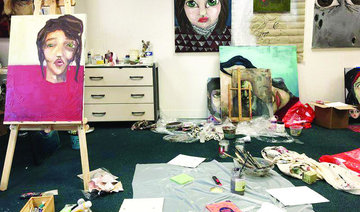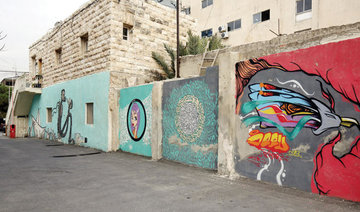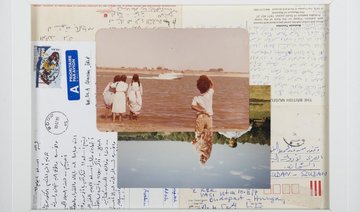LONDON: We have heard many stories about boats loaded with Syrians fleeing the violence in their country in search of an unknown future in European countries. The trusted people smugglers did not tell them that, for many, they would not live to see their destinations and would instead drown at sea, scattered off the shores of Europe.
According to the International Organization for Migration (IOM), since 2014, more than 8,000 people died crossing the Mediterranean on their way to Europe. According to the data, more than 1,252 of them were unidentified men, women and children who were buried without tombstones.
Now, British artist Arabella Dorman, who is known as the “war artist,” is refusing to let their memories fade. Instead, she chose to immortalize their memory through her incredible artwork, which shakes onlookers to their very core.
Dorman’s artwork, entitled “Suspended,” hangs from the ceiling of St. James’ Church in London. She expressed her feelings using pieces of clothing that belonged to Syrian refugees which had washed ashore.
In an interview with Asharq Al-Awsat newspaper, the artist said that she had visited many war-torn countries — such as Iraq, Afghanistan, and Palestine — and had met with people forgotten by humanity in a world clouded by mistrust and hatred.
“I have long been distressed by the tragedies I saw in those countries, in which I stayed for long periods of time to observe the suffering of innocent people, but my visit to Lesbos, Greece, during September and October 2014 has left me with a feeling I’ve never experienced before despite the tragedies I had seen in the past,” she said.
She added: “As I stood on the beach, which was covered with empty clothes, I felt an urge to rise up against this injustice. As a mother of two children, it pained me to see the empty clothes of little ones. No words can describe the pain that overwhelmed me.
“As an artist, I channel my emotions into paintings, but after I saw the wet clothes on the beach, which are the only remnants of these people, I decided to undertake a stronger project and turn these pieces of clothing into an artwork that reflects humanity in the world.”
The artwork is installed in the shape of a circle on the ceiling of St. James’ Church with a light source shining in the center. The light shines brightly then gradually dims until it goes out.
“The circular shape represents Earth and the changing light in the center represents hope and how it changes inside us humans,” Dorman explained. “When the light completely goes out, the darkness of the artwork reflects the dark, unfair human tragedy.”
When the artist first embarked on turning her idea into an actual work of art, she sought the help of the Starfish Foundation, a charity that helps refugees, as well as a remarkable number of volunteers. Dorman received around 1,400 pieces of clothing, from which she had chosen 800 and sent them to large laundries before she hired a company in the British Midlands to treat them so as to ensure they do not go up in flames in order to safely display them in public areas.
“Suspended” was hung in the churchyard in London on Dec. 11, and will remain there until Feb. 8. Dorman hopes that it can later be installed at Canterbury Cathedral in England, which will require the help and efforts of volunteers.
Twenty volunteers have helped Dorman install her work in St. James’ Church. She pointed out that the empty clothes are moving for many people, especially a baby’s shirt that says “my first birthday.”
“This shirt makes me shudder, especially as the baby was not aware that this was his first and last birthday,” she said.
St. James’ Church was chosen for displaying the artwork in December 2017 for three reasons. Rev. Lucy Winkett of St. James’ said: “Christmas can very easily be bankrupt of meaning, so as a church, we’re saying there’s no better time to talk about this big issue.”
The second reason is the need to shed light on the Syrian refugee crisis, while the third is the artwork’s contribution to raising donations for the Starfish Foundation to help refugees.
Dorman has been labelled a “war artist” because she worked with the British forces in southern Iraq in 2006, in Afghanistan between 2009 and 2014, in the islands of Greece in 2005 and in refugee camps in Calais and Dunkirk in 2015 and 2016.
She was listed as one of the BBC’s Top 100 Women in 2014 and as one of Salt Magazine’s 100 Most Inspiring Women in 2015.
* This article has been translated from Arabic and originally appeared in Asharq Al-Awsat on Jan. 24, 2018.
UK artist highlights refugee plight by using drowned Syrians’ clothes to raise charity
UK artist highlights refugee plight by using drowned Syrians’ clothes to raise charity

Saudi pop star Mishaal Tamer feels ‘honored and grateful’ ahead of sold-out London gig

- Singer tells Arab News his fans in the city have a special place in his heart but he owes his success to people all over the world who have embraced his music
- He says his debut album, “Home is Changing,” out in October, is a tribute to the changes and reforms that have swept through the Kingdom in recent years
LONDON: Saudi singer Mishaal Tamer said he feels honored to be performing his first headline show outside Saudi Arabia in London and is grateful to his fans there for their support.
Speaking to Arab News ahead of his sold-out gig on Friday at Camden Assembly, a live music venue and nightclub in Chalk Farm, Tamer said his fans in London will always have a special place in his heart.
“The people attending the show in London have been with me from before the starting line and I really appreciate that,” he said of the 220 people who will attend the event. “I will love those people forever and they will be in my heart forever.”
Tamer also thanked his fans in Saudi Arabia and elsewhere in the world, saying he owes his success as an independent artist to them.
“The kids that are back home and the ones abroad that have found me have been supporting me,” he said. “This would be impossible without them. I am grateful to the fans for listening to the music and sharing it.
He told how he was approached by two fans in a restaurant after arriving in the UK, which helped him realize how his profile was growing.
“One of them was Saudi, the other wasn’t,” Tamer said. “When I looked at that, it made me realize that not only was this bigger than I expected for me, as an artist, but that what we’re doing is bigger than me.”
His debut album, “Home is Changing,” is due for release in October and he said it is a tribute to the changes and reforms that swept through the Kingdom in recent years.
“There are so many opportunities that keep popping up, so many cool new things,” he added. “People have the freedom and creativity to make the world around them and the environment around them, to shape it into what they see in their heads.
“It feels almost like every other country is decaying whereas the Kingdom is growing and that feeling makes me proud.”
The evolution of Saudi Arabia “sets an example of always being hopeful for the future and having a positive attitude,” Tamer said. “And I think the optimism that we have right now in the Kingdom is a beautiful thing.”
Saudi filmmaker Abdulrahman Sandokji’s ‘Underground’ discusses the Kingdom’s music scene

- ‘Unfolding the unseen is my thing,’ says Abdulrahman Sandokji
DUBAI: “In film school, they tell you that your first film should be a documentary — train in a simpler form, then go to fiction,” says Saudi filmmaker Abdulrahman Sandokji. “So, naturally, I started with documentaries. But I got hooked.”
Over 15 years later, Sandokji still hasn’t moved on to fiction. Not that that’s an issue for him. His documentaries — produced by the company he founded, Basar Media — have proven immensely satisfying.
“A fiction film can take one or two years to shoot. I have no patience with waiting days and days to shoot one scene. I want things faster and more surprising,” he tells Arab News.

“And (documentaries) are honest. You’re talking about real stories. Unfolding the unseen is my thing, you know? I want to go into these deep places and show them to people,” he continues. “It’s a way to understand people, to really see people. To pick a flower from lots of beautiful gardens and plant them in your own garden. It’s more of a journey of discovery for me, you know? That’s what I love about documentaries.”
Sandokji’s breakthrough came with his 2014 film “Phosphine,” which he describes as a “Michael-Moore style” investigative documentary. It explored how the titular chemical — a potentially deadly respiratory poison — had been used (out of ignorance rather than malice) in homes to kill cockroaches, rats and other pests. While the actual occupants had been told to leave their apartments for five or six days, their neighbors were not, and the odorless gas killed them.
Sandokji put his documentary up on YouTube. It got 5 million views in five days, he says, adding that, at the time, he and his colleagues were delighted if they got 100,000 views on any of their videos, because they “weren’t funny — they weren’t comedies.” But “Phosphine” ended up making a difference to society, as well as to Sandokji’s career.
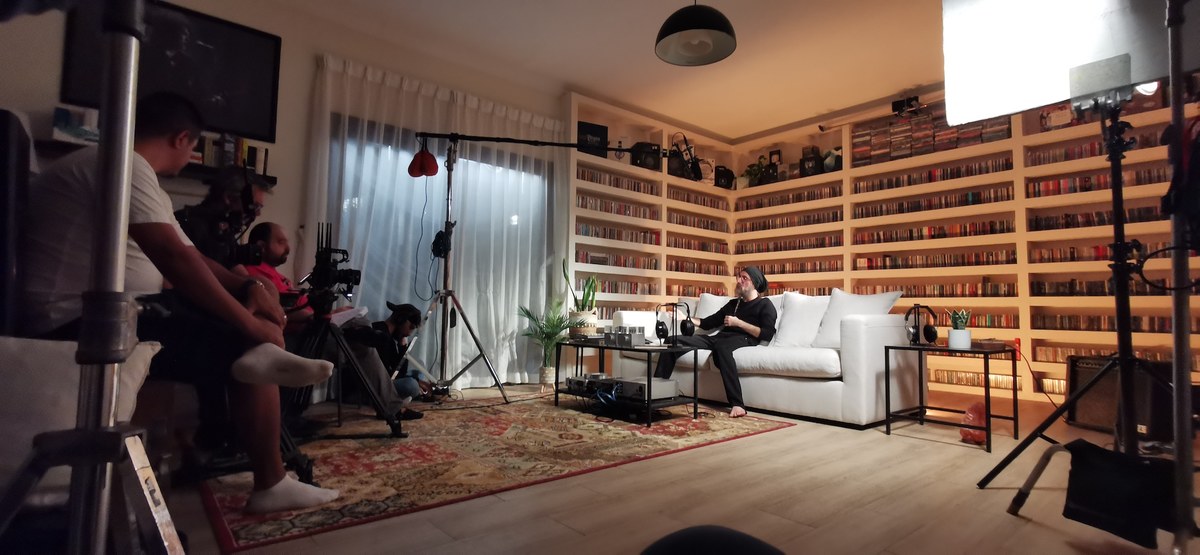
“We were on TV shows and talk shows — we were overwhelmed. Lots of social movement happened and governmental sectors held very urgent meetings about this substance. The Ministry of Health set up a hotline about it,” he says. “That was when I thought, ‘OK. Maybe this is your thing. Being a voice for those who want their voices to be heard.’”
Unlike “Phosphine,” Sandokji’s latest doc, “Underground,” is not a “tragic story.” But, once again, it was a “journey of discovery” for him — one that delves into the Kingdom’s burgeoning alternative music scene.
The idea — as for many of his films — was not Sandokji’s own. “When I analyze myself, I’m more of a person who receives an idea and then gets to enlarge it,” he says. “When I generate an idea myself, people go, ‘Mmm. No.’” He laughs. “They’ll go, ‘How about this idea instead?’ I’m like the gas — just throw the spark on me and I’ll explode, you know?”
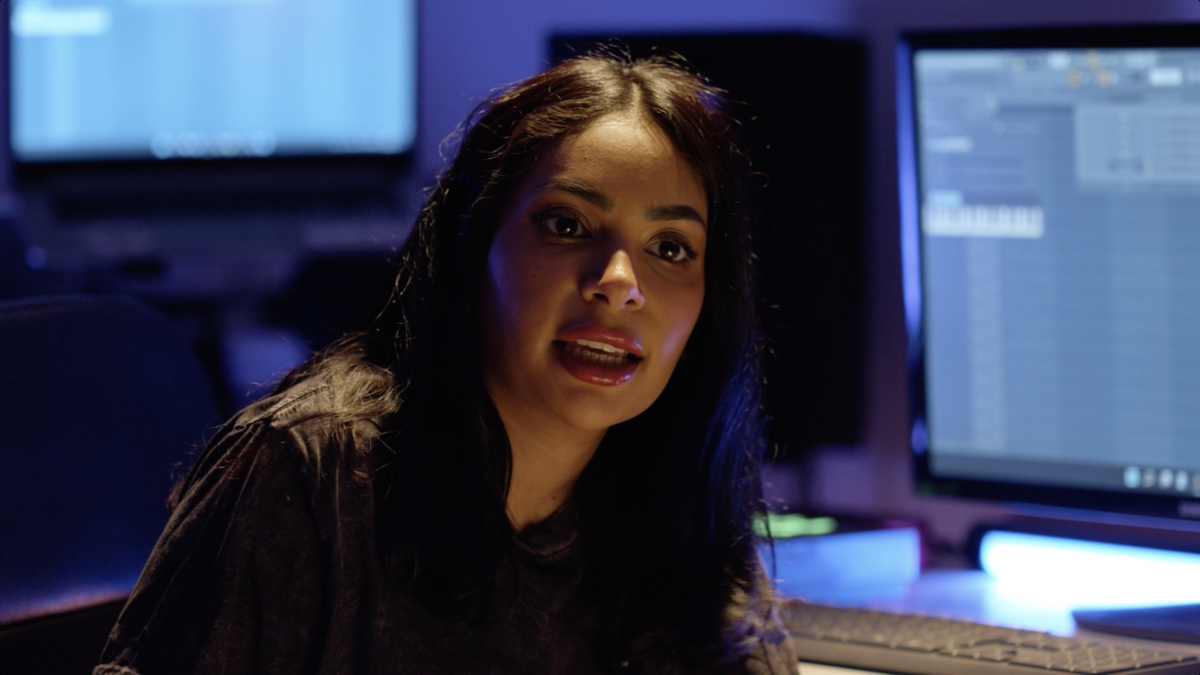
The “spark” for “Underground” came from a friend, Tamer Farhan. “He’s passionate about underground music. He knows all these artists,” Sandokji says. “And he opened the window to me and said ‘Come and have a look.’”
What Sandokji found was a wealth of talent and experience that has largely gone unnoticed in Saudi Arabia — understandably, given that until recently live music was largely outlawed in the Kingdom, and music that wasn’t commercial Khaleeji pop or classical Arabic fare was frowned upon.
“These people are good people,” says Sandokji. “Over the years people talked about the music underground as this place with drugs and all this prohibited stuff. But no. They are nice. They have feelings. They love their music and they’re passionate and they’re kind.”
That passion shines through in “Underground,” whether from veterans such as metal band Wasted Land’s frontman Emad Mujallid or relative newcomers such as DJ Cosmicat (Nouf Sufyani) and Salma Murad. All the artists involved are given the opportunity to discuss their craft and love for music in depth, and to play some of their music live.
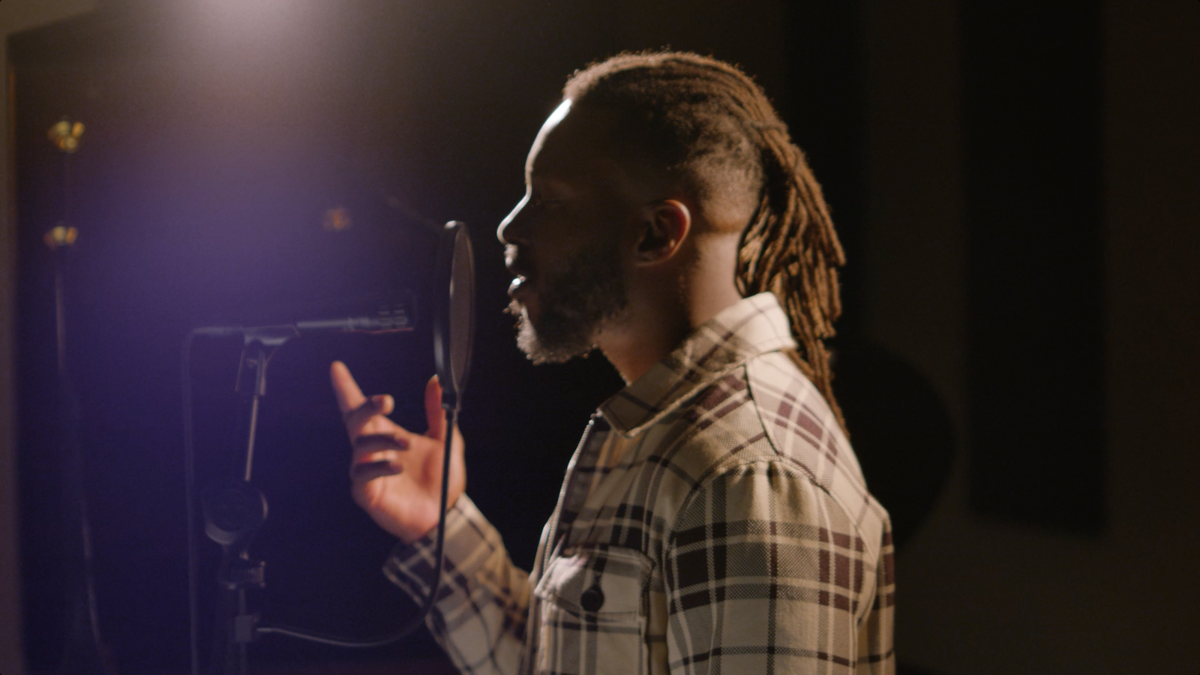
“(The songs) are not recorded and synced,” Sandokji says. “I wanted to show the audience how talented they are.”
So far, that audience is whoever attended the premiere on the opening night of the Saudi Film Festival on May 2 — another landmark for Sandokji, he explains. “Usually they choose fiction films — good fiction films — for the opening. I was always watching them thinking ‘When am I going to make a movie that could be screened in the opening? I’m a documentary maker, nobody would give me that chance.’ But it happened.”
And he believes “Underground” has the potential to grab international attention. It’s already been submitted for consideration at several large festivals, but the main aim since he started shooting it in 2022, Sandokji happily admits, has been to get the film on Netflix. There are also discussions underway about turning it into a TV series.
“It’s something people will want to know more about, I think,” he says, before citing the words the movie concludes with, when Murad is discussing what music means to her: “It’s powerful. It’s beautiful.”
“When Salma said that, I had goosebumps,” Sandokji says. “I thought, ‘Yes! These are the words the movie has to end with.’ Music is powerful; it can make you very strong, it can make you very weak… it’s magical.”
El Seed launches Tunisian olive oil brand Tacapae with artworks for bottles

DUBAI: French-Tunisian artist El Seed’s take on Arabic calligraphy (sometimes referred to as ‘calligraffiti’) has embellished favelas in Brazil, marginalized buildings in Cairo, and the Saudi desert. He is known for working with local communities to share messages of human connection, based on quotes from influential writers and philosophers.
In a departure from his usual large-scale artworks, the artist recently launched his most intimate endeavor to date. The project is called “Tacapae” and consists of olive oil-filled bottles decorated with El Seed’s swirling calligraphy. The name of the brand is inspired by the ancient Greek name of the artist’s hometown, Gabes, in southern Tunisia, from where the olive oil is sourced.

“I didn’t want to call it ‘El Seed Olive Oil’ because I don’t link the oil to myself,” El Seed tells Arab News at his Dubai studio in Alserkal Avenue. “I’m the founder, but the goal is to have a bottle designed by other artists every year. It’s a kind of partnership.”
El Seed explains that his cousin informed him of a plot of land for sale in Gabes. “And it happened that the olive trees of this land were planted by my great-grandfather,” he says.
El Seed purchased the land and its trees now provide the oil for Tacapae. A total of 31 bottles (a tribute to the land’s original 31 trees) were personally hand-finished by the artist himself.

The most powerful aspect of the ceramic, handmade bottles is the quote El Seed used. Translated into Arabic from a quote by 20th-century US novelist John Dos Passos, it reads: “You can snatch a man from his country but not the country from a man’s heart.”
Those words have resonated with El Seed his whole life. “Nobody can take away from you all the memories that you carry for a particular place,” he says. “I grew up in France, I live in the US and Canada and I spend some time in the Middle East, but my main focus is in Tunisia. I carry it with me.”
The story behind Saudi artist Alia Ahmad’s alluring abstracts

- Ahmad is garnering international attention, with two solo exhibitions in Europe
RIYADH: Hanging at the Diriyah Contemporary Art Biennale in Riyadh is a large canvas titled “Alwasm,” a 2023 painting by Saudi artist Alia Ahmad. It’s an instant showstopper. Guests on the opening night of the event, which runs until May 24, gathered around the painting, which was inspired by Wadi Hanifah in the Najd region of Riyadh, which is where the biennale is being staged. Commissioned for the event, the painting’s alluring warm tones and lively hues capture the titular period between October and December when the weather becomes cooler and there is respite from the arid desert heat.
Ahmad is on a roll. Since graduating from London’s Royal College of Art with a Master’s in 2020, the 28-year-old Riyadh-based painter has staged several solo exhibitions in her home country and has increasingly garnered international attention for her abstract expressionist canvases that depict the natural and urban landscape of her home country. Ahmad says she considers paintings “social spaces” as well as “blueprints.”

“These paintings represent my version of the landscape,” Ahmad tells Arab News. “They include elements that may be references to birds or various color palettes that aren’t necessarily found in the landscape, but that represent how I view it. I’m addicted to incorporating my imagination.”
The desert landscape, she stresses, “is not necessarily dry or empty. It has so much more.” And that is what she captures in the lush, lyrical brushstrokes of her abstract works, which are filled with references to local culture. “The traditional Arab bedouin dress is filled with color. As are the tents,” she says. “Women here have traditionally embellished their gowns. Where does this sense of vibrant creativity come from? The color and playfulness we imbue our traditional dress and items with comes from the landscape.”
Ahmad recently staged her first solo exhibition in Europe. “Terhal Gheim (The Voyage of the Clouds)” runs at White Cube in Paris until May 18.
On March 7 this year she sold her first work at auction at the Phillips 20th Century & Contemporary Art sale in London. Her painting “Malga — The Place in Which We Gather” sold for four times its estimate, bringing in a remarkable £101,600 (roughly SAR475,825).

And on May 2, another solo exhibition — “Thought to Image” — opened in London at Albion Jeune. Running until June 12, the show presents Ahmad’s alluring abstract landscapes, inspired by the hues of traditional textiles created by Sadu weavers of Bedouin tribes and the Arabic calligraphic script known as khatt.
“Much of my inspiration comes from textiles,” she explains. “At one point I was obsessed with buying pieces of fabric and making collages.”
She also used to draw stick-figure cartoons as a child, she adds. Those amateur drawings were works in progress — an aspect Ahmad continues to enjoy in her practice. “I loved the idea of having a drawing in progress to then fill in the blanks of what the character might look like later,” she says.
Ahmad’s paintings today are an amalgamation of various aspects of her homeland — its rich natural environment from the desert to the lush palm trees and other vegetation, local dress, jewelry and animals. She brings all of them together to depict in colorful abstract forms the richness of Saudi heritage, particularly that of her home region of Najd.
Her works, as international gallerists and collectors have found, are rife with specific local details that connect in some way with people across the world, even if only by piquing their curiosity about a country that has only recently really opened up to visitors.
Ultimately, Ahmad’s paintings serve as a unique reference point during a time of monumental social and economic change in the Kingdom, revealing and documenting a moment of both transformation and a desire to retain and promote Saudi’s rich heritage.
Her imaginary landscapes also include flattened perspectives, nods to her previous training in digital graphics. They reflect the futuristic visages of the modern world coupled with the beauty of the undulating curves of the desert landscape and the colorful attributes of Arabian culture.
Each painting takes the viewer on a voyage into a vibrant abstract world that echoes aspects of everyday reality.
As Ahmad puts it: “They are all playful paintings and I make sure that each work and each show I stage retains that aspect of curiosity.”
Saudi Arabia’s Wadi AlFann Publications launches art books after Venice showcase

DUBAI: AlUla-based Wadi AlFann Publications has launched two books — Saudi artist Manal AlDowayan’s “Oasis of Stories” and US artist Mark Dion’s “The Desert Field Guide.”
“Oasis of Stories” showcases drawings collected from AlDowayan’s participatory workshops with communities throughout AlUla, engaging over 700 Saudi women, leading up to her participation as the Kingdom’s representative at this year’s Venice Biennale.
The artworks portray various aspects of the women’s lives, reflecting the rich tapestry of their culture and identity.

Dion’s book assists “visitors and locals in unlocking the vast natural history of (AlUla) as well as its growing status as a cultural site,” he told Arab News.
“The deserts of AlUla are places of astonishing beauty and uncanny life forms,” Dion added. “The guide playfully, and at times mischievously, places Wadi AlFann in a global context, while highlighting unique life forms visitors might encounter. I am really trying to encourage a sense of wonder by emphasizing that the more you know about the desert, the more marvelous it becomes.”
AlDowayan and Dion hosted a panel discussion at the biennale last month and delved into their new launches, exploring how participation is fundamental to their practice as well as delivering insights on the desert.
Wadi AlFann’s Venice showcase featured the first five artists commissioned for the upcoming ‘cultural destination’ — AlDowayan, Agnes Denes, Michael Heizer, Ahmed Mater and James Turrell. They are producing artworks for eponymous AlUla valley, covering an area of 65 square kilometers. The project is scheduled to open its doors to visitors in late 2026.
AlDowayan told Arab News: “The most beautiful thing I have realized (at the Venice Biennale) … is the humanity we share and the language that we are trying to bring, about care, about climate change, and about preserving our languages and not really looking to the Western canon of how we are defined.”





